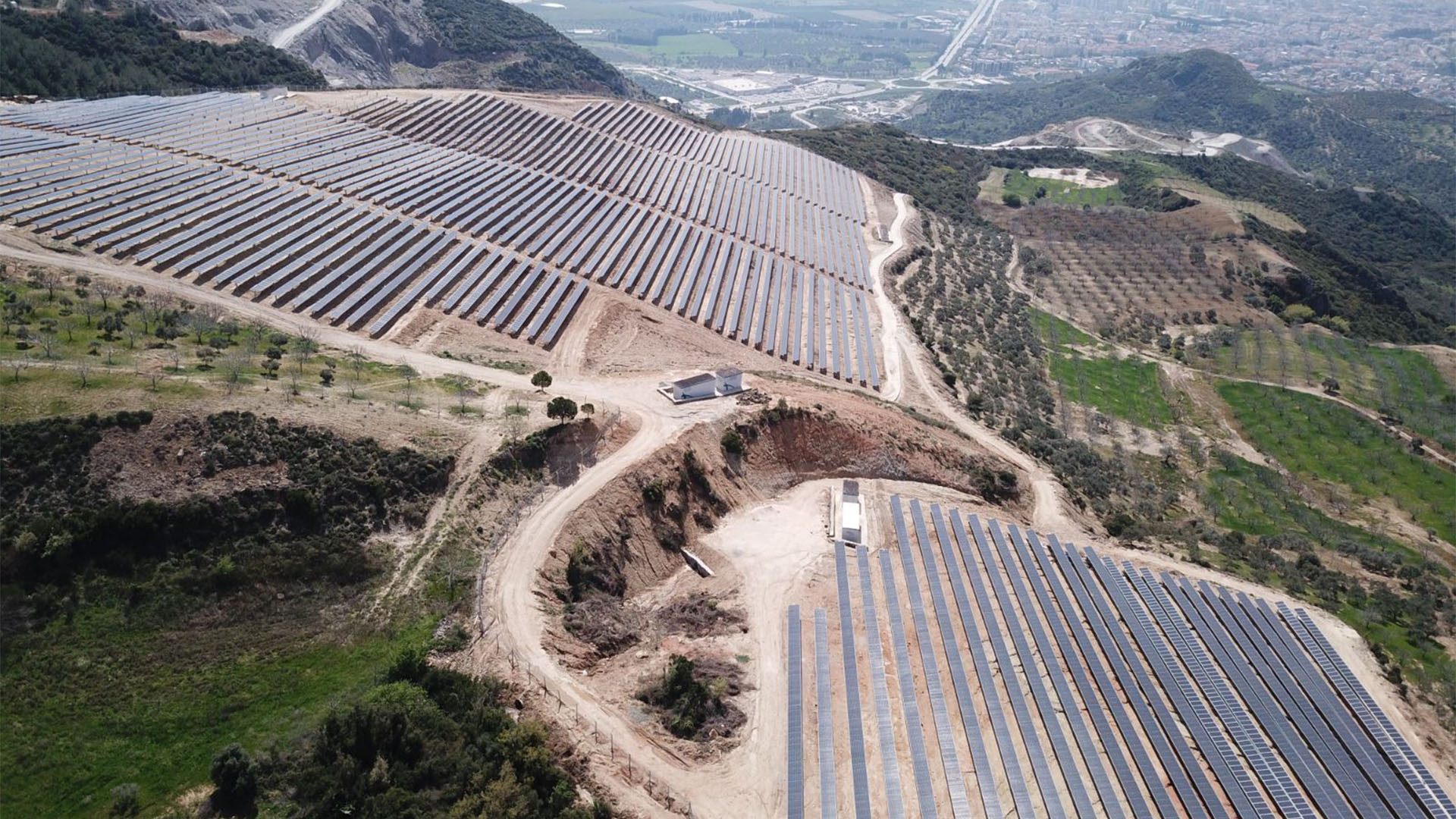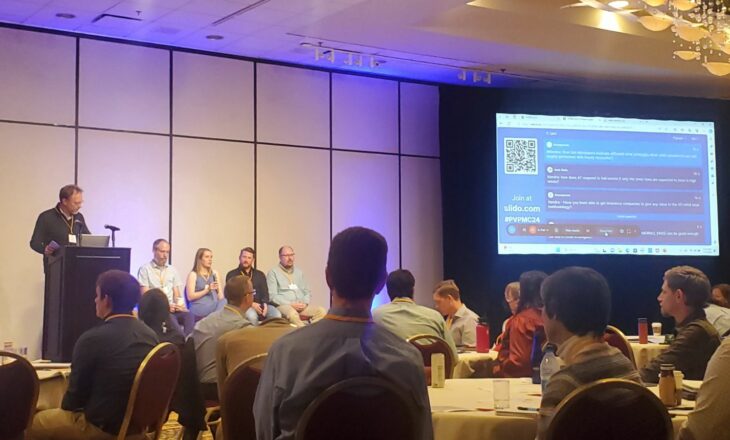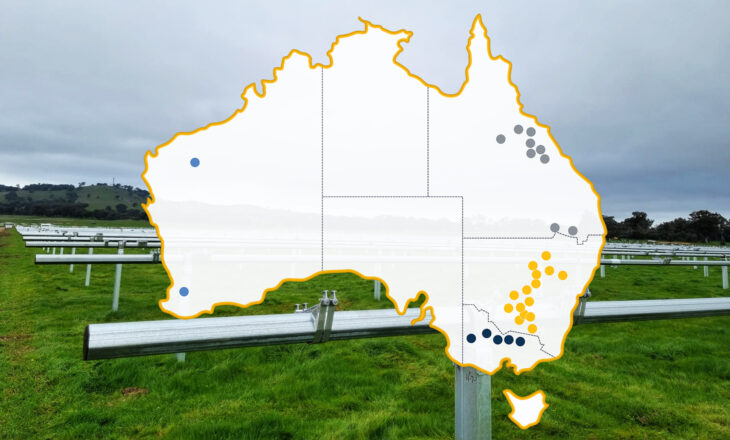
El crecimiento de la producción de energía solar y el desarrollo de centrales fotovoltaicas a gran escala ya no son tendencias aisladas a nivel regional.
De hecho, a medida que avanza el año 2021, trae consigo la promesa de un crecimiento nunca visto en la producción y el desarrollo de energía solar fotovoltaica en todo el mundo.
La revista PV Magazine destacó recientemente este crecimiento, señalando que:
- Con la ayuda de políticas de bajas emisiones de carbono favorables a la industria y de ambiciosos objetivos de energía verde, la energía solar está experimentando un boom mundial.
- El Reino Unido añadió 545 MW de capacidad solar el año pasado para alcanzar un total de 13,9 GW, y la UE registró un aumento anual de 7 TWh en el tercer trimestre de 2020, impulsado en gran medida por la aparición de España como una verdadera potencia solar.
Y recientemente, SolarPower Europe y EIT InnoEnergy lanzaron la Iniciativa Solar Europea (ESI) para ayudar a acelerar aún más el crecimiento del mercado solar fotovoltaico europeo más allá del impresionante 11% realizado en 2020, todo ello logrado frente a los vientos en contra de la pandemia mundial.
Este crecimiento, y los retos que seguramente lo acompañarán, necesitarán soluciones a la altura.
El equipo de expertos de ARRAY Technologies está preparado para ayudar a los EPC, a los promotores de plantas fotovoltaicas, a los inversores y a las aseguradoras a capitalizar el enorme potencial solar de estas regiones, incluyendo América Latina, el Caribe, Australia y Europa.
Tendencias internacionales
Como ocurre en muchos lugares del mundo, las plantas solares fotovoltaicas tendrán que desarrollarse en lugares no óptimos, a tiempo y dentro del presupuesto, y teniendo en cuenta un rendimiento sólido y un menor coste total de propiedad durante décadas.
Para hacer realidad esa visión, existen oportunidades en las siguientes tendencias solares internacionales clave:
- La ampliación de las filas de módulos.
- Un cambio hacia un enfoque en los gastos operativos y un menor riesgo asumido por los promotores y propietarios.
- Innovación en los módulos para condiciones difíciles.
- Facilidad de instalación y funcionamiento.
La extensión de las filas del módulo
Para optimizar el rendimiento energético de una instalación fotovoltaica es necesario maximizar la cobertura del emplazamiento, incluso en terrenos difíciles. La ampliación de las filas de módulos puede ayudar a los desarrolladores a conseguirlo.
Esta tendencia a ampliar las filas de módulos permitirá a los promotores de lugares como España, que está previsto que duplique el ritmo de crecimiento del líder europeo, Alemania, en un futuro inmediato, construir plantas potentes y de alto rendimiento, independientemente del terreno.
Al aprovechar una fila de seguidores de cuatro cadenas en lugar de una fila más tradicional de tres cadenas, el coste global por vatio de cada fila individual se reduce drásticamente. La idea central es ofrecer configuraciones de planta más flexibles que ayuden a los promotores a aprovechar los emplazamientos solares no tradicionales y a encontrar el diseño más eficiente y rentable para una zona concreta.
Al ampliar la longitud de las filas de módulos, hay más espacio para optimizar la ubicación de las columnas y permitir el tramo de tubos determinado. Además, una reducción del número total de filas reduce drásticamente el número mínimo de componentes estándar y los costes asociados a su implementación. Por ejemplo, una configuración de cuatro filas puede reducir a menudo los motores por sitio de forma sustancial. Y, obviamente, un menor número de bloques de motor de mayor tamaño crea una mayor densidad energética y disminuye los índices generales de fallos de los componentes.
A medida que los proyectos internacionales de todo el mundo tratan de sacar el máximo provecho de las ubicaciones propuestas para las plantas fotovoltaicas, la capacidad de ampliar las filas de módulos actúa como otra herramienta para encontrar la configuración óptima, reduciendo tanto los gastos de capital como los gastos operativos, y maximizando la producción de energía.
Un mayor enfoque en los gastos operativos y un menor riesgo asumido por los desarrolladores y propietarios
La rentabilidad del proyecto a largo plazo y la planificación financiera para el ciclo de vida de una planta fotovoltaica son consideraciones clave para obtener el máximo valor de un proyecto a gran escala.
El enfoque general de la industria está pasando de una mentalidad de CAPEX a otra más preocupada por el OPEX y el coste de propiedad a lo largo de la vida, especialmente a medida que se dispone de datos más sólidos sobre el rendimiento a largo plazo de los seguidores solares de un solo eje.
El uso de seguidores de un solo eje y las estrategias destinadas a aumentar la densidad de potencia de las hileras, optimizar la cobertura del suelo y potenciar el rango de movimiento ayudan a los promotores a ahorrar dinero a lo largo de la vida útil de la planta, mientras que las soluciones menos robustas y más centradas en el CAPEX están empezando a agotar los recursos a menos de una década de funcionamiento.
El ahorro y la confianza que proporcionan unas inversiones más estables y a más largo plazo podrían reducir el riesgo general de los EPC, sobre todo en lugares como Australia, donde el país se esfuerza por encontrar una forma de conectar y distribuir mejor la creciente generación de energía renovable entre una red con problemas. Cuanto menos riesgo presente una planta y más dólares se puedan ahorrar para ayudar a diseñar estas conexiones, mejor.
Innovación en los módulos para condiciones complejas
En todo el mundo, el tamaño de los módulos tiende a ser mayor. A medida que aumenta su tamaño, también lo hace su susceptibilidad a los daños causados por el viento, lo que puede suponer mayores costes de seguro y un mayor riesgo para el proyecto.
Los seguidores de un eje de ARRAY están equipados para aprovechar un sistema patentado de mitigación de la carga del viento que no depende de la sujeción activa, los sensores o la electricidad.
Esta innovación permite a los seguidores de ARRAY hacer frente a las altas velocidades del viento, incluso ante el aumento del tamaño de los módulos, y la innovación en su conjunto está ayudando a aumentar la eficiencia de la planta, a reducir el riesgo de daños climáticos y a crear plantas más rentables.
Facilidad de instalación y funcionamiento
Los países y las regiones que trabajan para aumentar la producción solar y acelerar la construcción atraerán a los inversores, pero esos inversores y los EPC necesitan reducir el riesgo.
ARRAY ofrece un sólido soporte logístico y de proyectos, así como seguidores de un solo eje con más de 160 componentes menos que las soluciones tradicionales.
Esto, combinado con herramientas en forma de filas ampliadas y soluciones para terrenos no óptimos, ayuda a los EPC a reducir los costes de mano de obra, agilizar los plazos de construcción y aprovechar el poder de los expertos dedicados al rendimiento y el coste de propiedad a largo plazo de las plantas solares fotovoltaicas.
ARRAY Technologies se dedica a proporcionar apoyo integral a los proyectos de plantas fotovoltaicas a gran escala con equipos globales y locales comprometidos con el rendimiento y la rentabilidad de la planta a largo plazo.
Para obtener más información, póngase en contacto con nosotros.
Click here for other articles by this author



